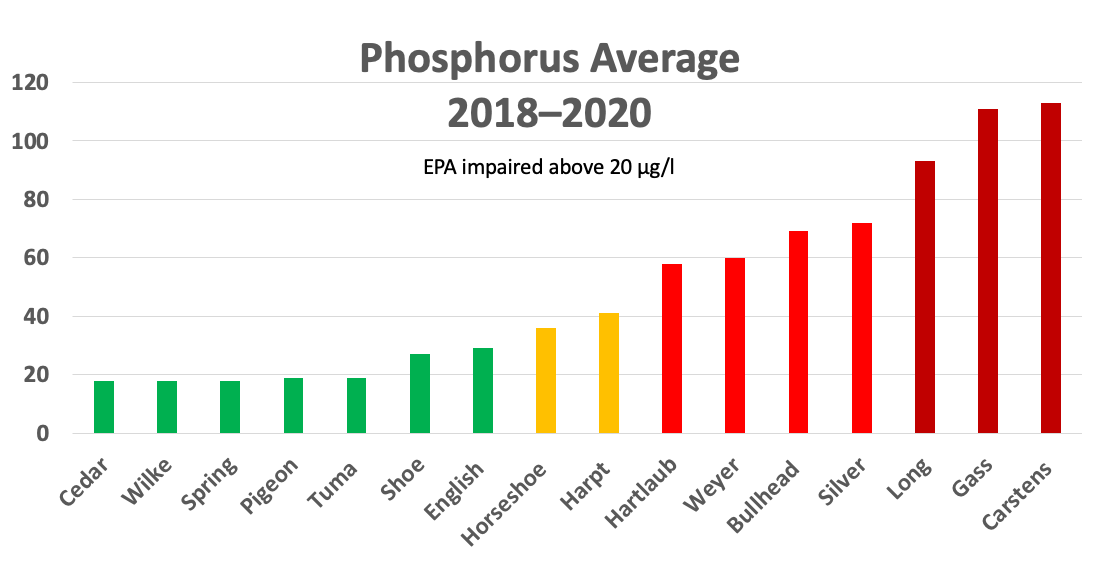Data Report Courtesy of Gene Weyer
A graph created by Gene Weyer shows the updated Phosphorus Levels to include lake samples for 2020. Most Manitowoc County lakes completed the normal 3 summertime samples.
You can also find your specific lake’s progress by reading year-by-year reporting at https://dnr.wi.gov/lakes/clmn/Stations.aspx?location=36&year=ALL
Gene wishes to thank lake volunteers for their efforts in collecting this data. Volunteer monitoring is the primary vehicle for data collection.
- The Clean Water Act requires states to publish a list of all waters not meeting water quality standards and an overall report on surface water quality status of all waters in the state every two years. Wisconsin produces three lists:
- Impaired Waters: This list contains waters with no cleanup plan in place. Eight Manitowoc county lakes are on this list: English, Harpt, Hartlaub, Weyer, Bullhead, Long, Gass and Carstens.
- Restoration Waters: These are impaired waters with a restoration plan in place. This list was created during the 2020 cycle. Silver Lake is on this list.
- Healthy Waters: These are waters assessed for at least one metric and show no impairment. Waters have been identified since 2014. The list was created during the 2018 cycle. 21 county lakes and 5 beaches appear on this list.
- More information about Wisconsin’s Healthy, Impaired, and Restoration Waters Lists can be found here.
- A list search tool is available here.
- Phosphorus pollution (or impairment) continues to account for the majority of new listings on Wisconsin’s official Impaired Lakes list. Too much phosphorus can throw a lake’s ecosystem out of balance. Sources of phosphorus include farm fertilizer and sewage. What does the term impaired mean? Read more in this 2017 article.
- Volunteer monitoring is the primary vehicle for data collection in Wisconsin. Statewide, Citizen Lake Monitoring Network (CLMN) volunteers collect Secchi depth data on 670 lakes, chlorophyll-a and phosphorus data on 403 lakes, temperature data on 377 lakes, and dissolved oxygen data on 244 lakes each year. Samples are collected once during spring overturn, and three times during the summer (June to September).


